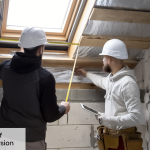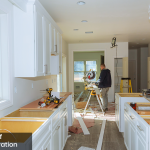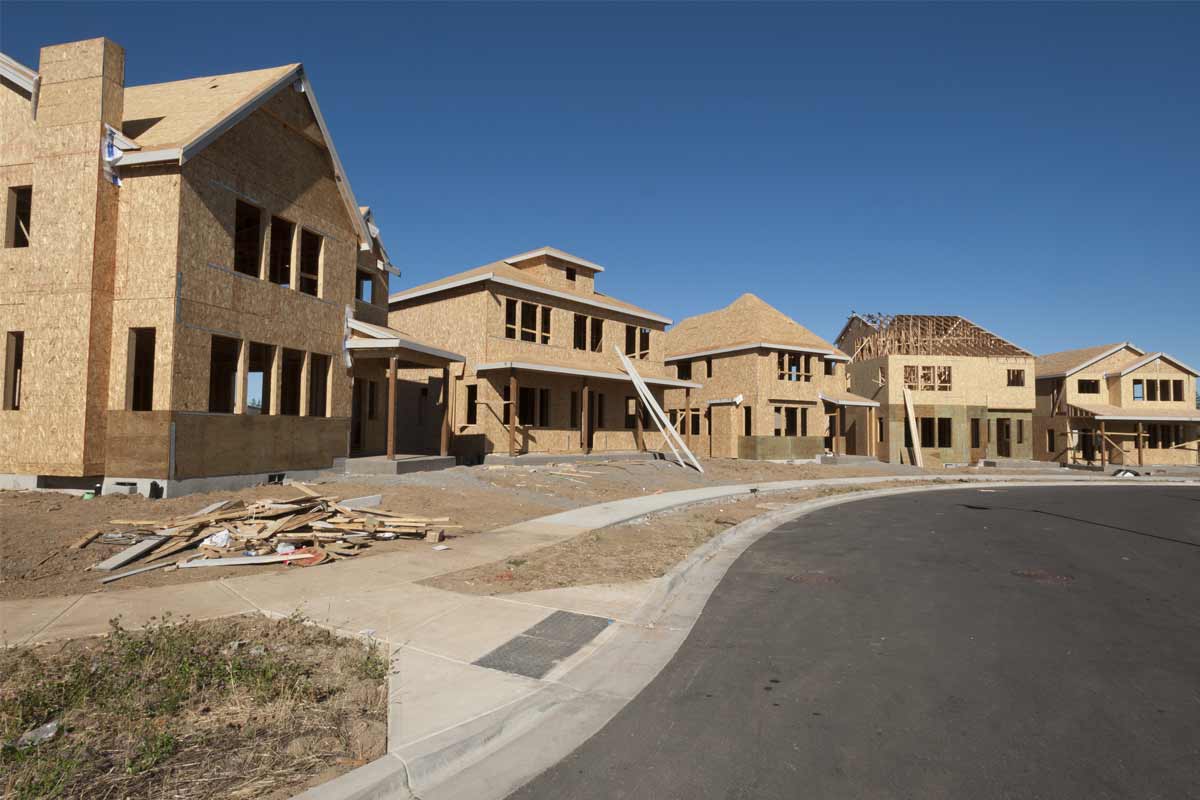If you’re undergoing a loft conversion, you need to comply with the building regulations irrespective of whether your project needs planning permission or not. Doesn’t matter if the attic space is big or small or whatever type of loft conversion you’re undertaking, you need to get approval from building regulations. Your loft conversion company, structural engineer or architect will help you prepare the structural specification plans and perform other calculations. This will ensure that your new loft conversion complies with the building regulations and that you get approval. Here’s everything you need to know about the building regulations for loft conversion in the UK.
Loft Conversion Building Regulations UK
Loft conversion building regulations are a set of regulations for the newly converted attic spaces or lofts that ensure structural stability, fire safety and health of all concerned. All the new buildings undergoing loft conversions are required to seek approval for building regulations to ensure:
- The new floor is structurally stable
- The stability of the new floor and foundations
- Fire escape and safety routes
- The new floor and the staircase safety design
- Proper sound insulation between the new loft space and the existing rooms
The Department of Levelling Up, Housing and Communities, England is the department responsible for enforcement of Building Regulations for loft conversion. These regulations are applied to most of the buildings undergoing alterations as well as new buildings being constructed. There are a set of approved documents that offer general guidance to the constructions and design aspects of the building that are needed to comply with Building Regulations.
A much deeper level of detail needs to comply, so you need to hire a structural engineer, or your loft conversion builder will help. The project will be assessed by a local building control officer or any privately hired inspector. Approvals can be obtained by filing an application to the Local Council Building Control department. It is usually done by locally approved Inspectors. You won’t be able to sell the property (undergone loft conversion) if the property does not have approval from Building Regulations Department.
In Which Scenarios Do You Need to Submit Application for Building Regulation Approval?
- Creating a Storage Space: If the purpose for converting your loft is to turn it into a storage space, you may need to seek building regulation approval. This is because the timber joists that act as the “floor” of the loft are not designed to support any significant weight, meaning that excessive weight can lead them beyond their capacity. So, you need building regulation to ensure their safety.
- Creating a Functional Living Space: If the goal is to create a live-in space, you need to seek building regulation approval as part of your home. This is because loft conversions usually require a range of changes to be made which can affect the original structural integrity of the building so that both the house and its occupants are not at risk. If you are making just minor changes such as to access water tanks or for light storage, there is no need to file an application as long as it can be served with a retractable or portable loft ladder.
What do These Building Regulations Cover?
1. Building Regulations for Stairs: Certain building regulations for the loft stairs need to be followed:
-
- Height and width: You can have a maximum of sixteen stairs for your loft. Though most of the homeowners keep it below 14. Also, there is no minimum limit on the width of the loft stairs, but most experts recommend it to keep it 600mm for accessing the loft perfectly.
- Going and Rise: The length of the step is known as going and the distance between two steps (or, height) is called rise. The going should be between 223 mm and 320 mm. while the rise should be strictly between 150 mm and 220 mm.
- Pitch of staircase: The angle or pitch of the staircase shall not be more than 42 degrees.
- Headroom: The minimum headroom should be 2m and that shall stay constant throughout. It can be decreased to 1.8m for a sloping roof.
- Single Rooms: For single rooms, space saving staircase with handrail on both sides.
2. Thermal Insulation: When you go for loft conversion, it is estimated that 25% of the heat gets lost through the loft roof. So, it becomes important to ensure proper insulation of the roof to attain maximum energy efficiency. There needs to be proper thermal insulation of a minimum U-value of 0.16W/m2K for a non-insulated roof. This can easily be achieved by giving mineral wool insulation of 250mm.
3. Fire Safety Regulations: Fire safety is one of the major concerns to ensure the safety of the newly converted loft. The existing loft doors need to be replaced by a fire door. This fire door should be able to resist the heat of the fire for a minimum of 20-30 minutes. This will give ample time for a person to escape. The loft conversion needs to have a smoke alarm and it should be connected to the mainline
4. Doors & Windows: The doors and windows should be in line with the fire safety regulations. They should be able to protect from the fire for a minimum of 20 minutes. Also, windows should be properly glazed to provide good thermal insulation. Also, if any window is overlooking a neighbour’s property it needs to have obscure glass to ensure privacy at both ends.
5. Roofing and walls: The walls and roofs should be well-insulated and fire safe. There should be a head height of at least 2.2m.
6. Electrics: You will be required to install new electrics for the loft conversion. For this, consult your builder or an accredited electrician to ensure electrical safety from all perspectives.
7. Drainage: When planning to add a bathroom to your new loft space, you need to consider the drainage as well as the waste disposal mechanism. For that, you may need to hire a good and certified plumber to do the tasks. The bathroom or other plumbing activities that need to be undertaken in the loft need to comply with document ‘H’ of the building regulations.
8. Floor Joists: If it’s a traditional loft or a loft that hasn’t been used as a living place, the ceiling joists may need to be inspected. It may happen that they are not suitable to be converted into the floor for the loft. There should also be an insulation of 100 mm between the joists to ensure adequate sound insulation.
9. Part Wall Act: If you’re living in a semi-detached or terraced property, then you may need to get a party wall agreement signed by your neighbours. This is to ensure that the common wall which will be altered is done with their consent. This will save you from many disputes as well.
10. Resistance to moisture and contaminants: This section of Building Regulations UK deals with site preparation to ensure that to avoid water ingress and moisture control on buildings. It also provides instructions to deal with contaminated land that’s due to the presence of harmful gases or hazardous substances.
11. Sound Insulation: This section deals with the sound insulation of the newly constructed loft space with respect to party walls. The homeowners may need to upgrade the walls (fully or partially) in case they are not up to the standards for the habitable space. The details are mentioned in Approved Document E that throws lights on sound insulation for both new dwellings as well as the buildings undergoing conversion to form dwellings. All the details pertaining to sound reduction, cancellation, and insulation in designated rooms in dwellings, rooms in residential purposes and acoustic conditions for common areas such as schools, flats etc are mentioned here.
12. Ventilation: Building regulations also lay down standards or proper ventilation across the new floor space and maintain the air quality of the building. Apart from that, it focuses on aiming for water efficiency as well as safety requirements for the hot water systems that go unvented.
13. Drainage and Waste Disposal: Various technical aspects and designs are mentioned that are required to comply to ensure proper rainwater drainage, foul drainage, sanitary pipework, wastewater treatment, cesspools, and discharges.
14. Electrical Safety: This section covers the installation, design, testing and inspection of all electrical installations. These regulations must be complied to prevent injuries from electrical fire-breakouts, burns, shocks etc that may happen due to overheating or arching of electrical components.
Is Building Regulation Approval required for loft conversion UK?
Whether you need planning permission for your loft conversion project or not, you are under an obligation to follow the relevant building regulations. Building regulations are critical because they ensure that any alteration is structurally stable and built to last as well as ensures that stairs and fire escape are planned and installed correctly. These regulations need to be complied and followed whether you want it to convert it to a storage space or a fully functional habitable space.
How to Apply?
If you are hiring a private inspector, then he does all the work, and you just need to sit back and relax. But, if you want to apply by yourself to local authority, an application needs to be filed. You will require a full plan application for a loft conversion which may take up to 8 weeks for final approval. For minor roof works or small alterations, speak to your builder about how to go about the process.
TEL Constructions is one of the leading loft conversion company that has years of experience and rich expertise in renovation services, extension, loft conversion and new building projects. All the projects delivered by us fully comply with building regulations. This is the reason we stand as the most preferred loft builders in London. Speak to us today or email us your details. Our experts will get back to you ASAP.
 06 September 2024
06 September 2024 06 September 2024
06 September 2024 05 June 2024
05 June 2024 05 June 2024
05 June 2024 05 June 2024
05 June 2024



mangat